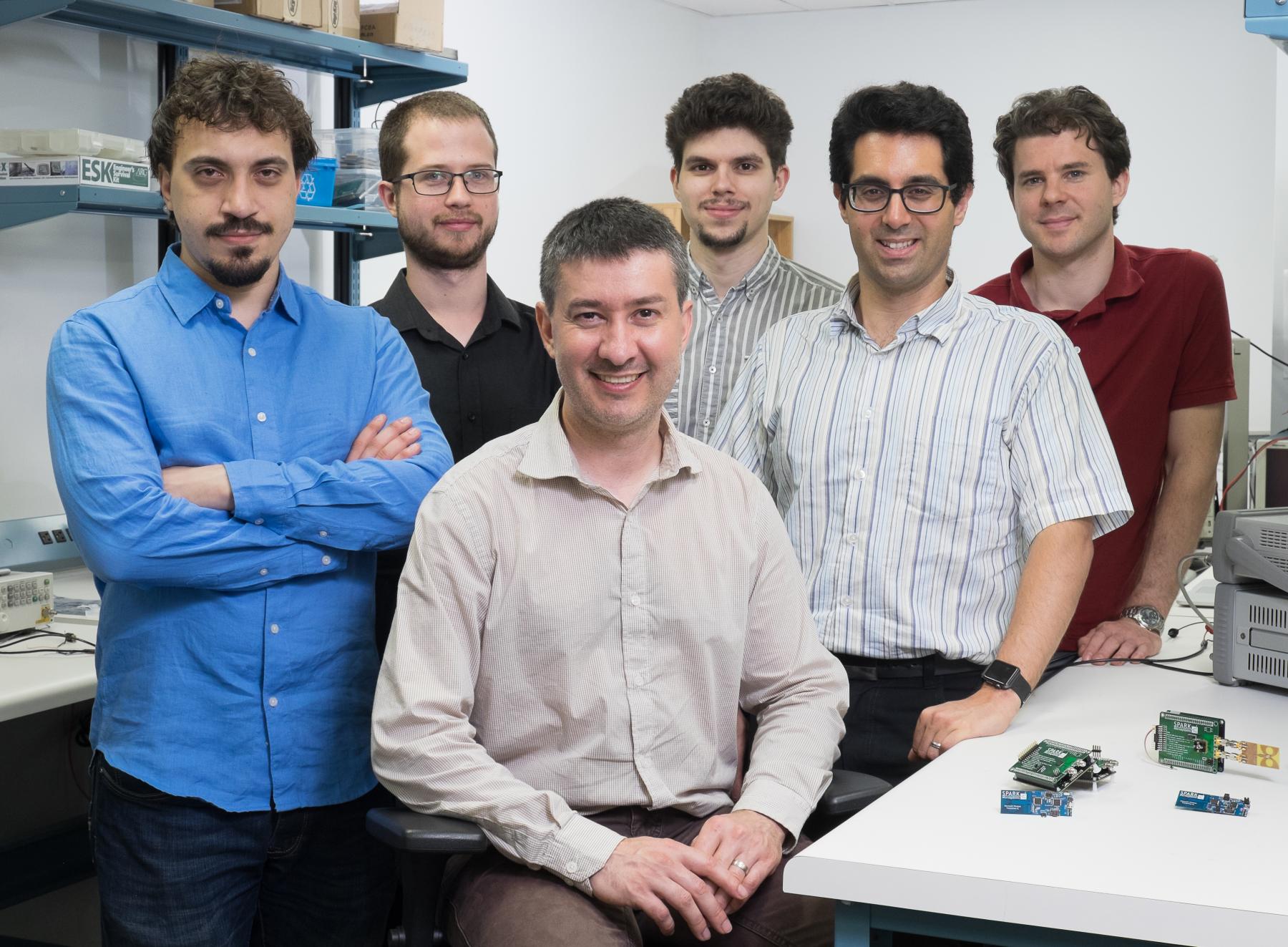Imagine never having to recharge your wireless device. That’s the future envisioned by SPARK Microsystems.
This Montréal start-up is commercializing a low-power, short range wireless transceiver that could be a game-changer in the evolution of the Internet of Things.
“What you want is a device that won’t need to be charged for more than a decade, or maybe eliminate the need for the battery altogether,” says Frederic Nabki, company co-founder and a professor of Electrical Engineering at the École de technologie supérieure (ÉTS).
Arriving at that solution required a complete change of mindset, he says. “Wireless transceivers have been fairly similar for the last 15 years. We threw that conventional design out of the window and started fresh. We re-designed and re-thought it, and developed a novel architecture that enables outlandish features that are really unique.”
Batteries consume a lot of power even when the devices they’re powering aren’t performing any functions. Nabki and his team have found a way to significantly reduce this waste of energy: the chip that drives their technology is tailored to perform quickly, and then shut off – a process that happens in microseconds. “Traditional radios operate continuously,” he explains. “Our transceiver does everything in pulses of about 50 microseconds.”
This pulsing action makes their chip an order of magnitude more energy efficient than Bluetooth Low Energy or ZigBee. It also has better security (its short-interval signals are harder to intercept) as well as faster data rates and a shorter latency, which is the time it takes for a signal to be transmitted and received. “Basically, it does the job very, very quickly, and then it goes to sleep.”
Its low power requirements also make it possible for the technology to be battery-less, relying instead on harvested energy from solar power or vibrations, Nabki says.
SPARK’s technology has broad potential for the Internet of Things, where web connected objects such as thermostats or household appliances communicate to make our lives easier. This wireless connectivity is poised to become even more sophisticated, but the high power consumption of a household’s potentially dozens, or even hundreds of wireless devices, and the related need to monitor and recharge their batteries, is a considerable hurdle. “That is the problem we think we can solve,” says Nabki.
He co-founded SPARK in 2016 with his colleague and long-time collaborator, Dominic Deslandes, also a professor at ÉTS. Nabki says the company is close to completing seed financing and is also working on a beta chip that clients can test.
CMC Microsystems has been essential to the company’s success, says Nabki, citing the availability of resources such as micro-fabrication and CAD access for the tape-out of MEMS and integrated circuits.
“Fabrication using these advanced technologies and CAD tools is very expensive,” he says. “CMC allowed us to do cutting-edge research at a fraction of what it would have cost. We could afford to make prototypes, test them, and iterate the process. This enabled us to find our solution more quickly.”
Equally important to the technology’s success were the students involved, Nabki says. “This was a classic research project that started with undergraduates because we had very little funding.” Prototyping their experimental devices gave them a chance to demonstrate results and attract more funding, and hire graduate and PhD students and postdoctoral researchers.
“We could not have done this without CMC. Canada should be proud to have this institution and I hope it is around for many years to come.’’
The disruptive potential of SPARK technology has been acknowledged in Silicon Valley, where it is connected with business advisors and mentors via the Silicon Catalyst Incubator, the world’s first incubator focused exclusively on semiconductor solutions start-ups.
Earlier this year the company was selected for inclusion in ÉTS’s CENTECH Propulsion program, a two-year growth acceleration program targeting high-potential companies. The company is also supported by Ecofuel, an accelerator that specialises in clean technology.
Although still an early stage company, SPARK is already giving back to the microsystems community. It is working with Innotime Technologies, Canadian-based microsystems integration specialists, to develop a multitechnology interposer platform. “Our team helped with the design kit and design rules,” says Nabki. “It’s a cool project, and we may eventually use the technology on both the research and commercial side.”
Most of the company’s potential customers are systems integrators who will put the SPARK Microsystems chip into products. One of its immediate challenges is deciding which sector to focus on first.
“Our product is so versatile,” Nabki says. “It could work in the industrial sector or with the automotive industry, medical, wearables and home automation. Right now, we’re focusing on the medical market and the wireless audio market, where there’s a lot of consumer demand.”
Photo: Yves Clement/Photo Features
July 2017

